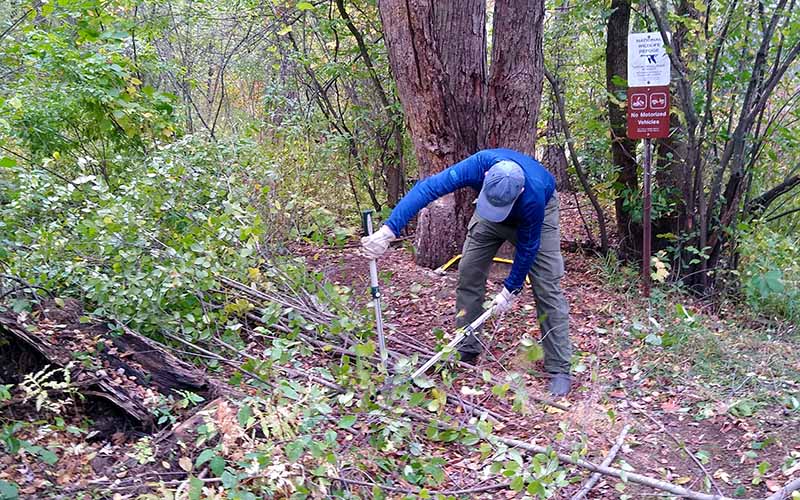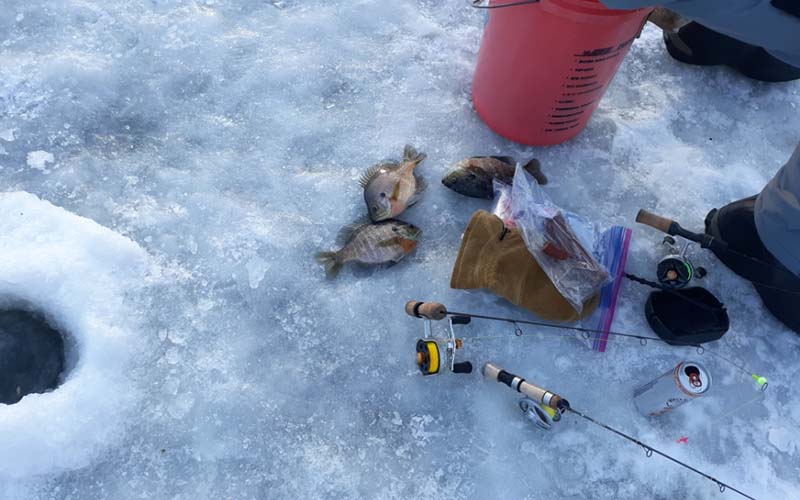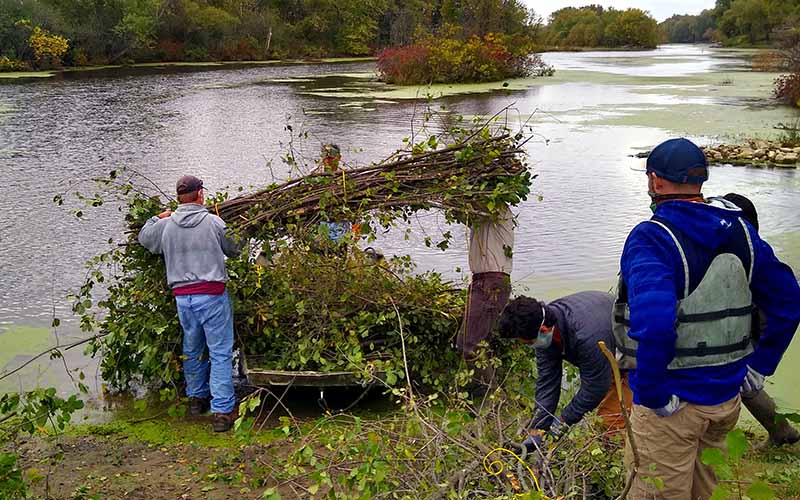Fritz Funk is a member of the Brice Prairie Conservation Association.
What is your role/who are you?
I’m a retired fishery biologist. I serve on a variety of nonprofit boards related to conservation activities. We are on the edge of a National Wildlife Refuge and often work together with agencies in this area to protect the refuge, including the Wisconsin Department of Natural Resources, United States Army Corps of Engineers, United States Fish and Wildlife Service and local and national officials. This little project involved all of those entities working together. It’s a neat little story.
Why was this restoration project needed?
First, the big picture. We are on a reservoir on the Upper Mississippi River. The upper river has 26 locks and dams going down into Illinois. It was dammed for navigation purposes in the 1930s as a depression-era construction project. That created a series of pools, or reservoirs, going down the river. Lake Onalaska is one, on the reservoir of lock and dam number seven.

The reservoirs were initially deeper, and, like all reservoirs, their ultimate fate is to fill in due to sediment deposition over time. This happens to all riverine lakes over time. What we’ve seen in the last decade is an acceleration of that timescale. Changes in precipitation combined with changing farming practices have caused the acceleration.
We’ve had these back-to-back high flood conditions for a ridiculous number of years. Farmers are putting in drain tiles to move water quickly off their fields, not putting in as many shelter belts or leaving any borders or hedgerows anymore. The sediment pours off these fields during heavy rains and drains into the rivers. Since the drainage basin is heavily agricultural, the end result is we have a lot of water coming down the river and we have a lot of sediment runoff due to these high flow conditions.
Our reservoir, Lake Onalaska, is filling in much more quickly than it would have otherwise. We’re reaching a critical point where the water quality is going down very quickly. Our lake has become shallow enough now that we have a very large amount of submerged vegetation reaching the surface.
We’ve lost the depth diversity and deep holes that the fish need to survive winter. With shallower depths, when the submerged vegetation reaches the surface, it just bends over and floats on the surface, catching free-floating plants like duckweed and creating these large mats on the surface. Shawn Giblin of the Department of Natural Resources has been doing groundbreaking research on the water quality that happens underneath these free-floating mats and it’s not good.
During the night time, the oxygen content goes to zero and fish can’t live there. Shawn’s work in sampling the water quality under the mats led him to sample the Blackdeer Channel at our request. While there sampling, he noticed the flow was really, really high there, in part because high water was eroding the opening and allowing more flow through. This made the channel unsuitable for fish to be able to overwinter and got us thinking about what we could do. It became a story of many agencies working together.

How were you able to create overwintering habitat?
Our local conservation group, the Brice Prairie Conservation Association, is a fairly biologically informed group. We have a lot of membership and volunteer resources. Between the Fish and Wildlife Service, Lake District members, Brice Prairie Conservation Association members, and the Department of Natural Resources, we organized two really big work crew days. On the first day we attacked the nearby infestation of invasive buckthorn and made brush bundles out of them. The second day was placing and staking down the brush bundles in this opening to bring the flows down to the level that was getting into the optimal overwintering habitat zone. We didn’t quite get to an optimum level this winter, but we got close enough and saw the benefits.
How important are lake organizations, like Brice Prairie, to restoration efforts?
We’re fortunate that there’s a lot of interest in conservation in the outdoors here. The Brice Prairie Conservation Association dates back to the 1950s. Our mission is to protect and conserve Lake Onalaska and the Black River Delta. This little project fit closely with our mission. We have a lot of members who are skilled in backwater navigation and going out in the field for some of our forestry projects and other things. That skill set was the perfect fit for this project. There is only so much that resource agencies can do so some of the boots-on-the-ground projects have to happen with volunteer labor.
Can you talk about the losses in the floodplain forest?
Because of an invasive species, the emerald ash borer, we recently lost all the ash trees here. It wasn’t a dominant species but there were a lot of them. Another impact on the floodplain forests is sedimentation, which creates conditions for invasive plants like reed canary grass and purple loosestrife. We’re seeing vast plains of the reed canary grass that form canopies that are dense enough to shade out seedlings of native species, like swamp white oak and silver maple, so they can’t reproduce naturally.
The Brice Prairie Conservation Association has a very active program of generating sprout saplings from acorns and planting them in the marsh when they’re big enough to survive. We have been very involved in this reforestation effort for 30 to 40 years.

Do projects like these give you hope for Mississippi River ecology in the future?
Yes. For example, pool seven in the spring and fall is really, really important to a couple waterfowl species like tundra swans and canvasback ducks. A significant portion of eastern North American canvasback population migrates through this area. They come non-stop from Canada, and need to refuel in the deeper waters of the reservoir around here. The same wild celery plants that are reaching the surface and causing these mats that hurt the fishery are really important to the canvasback. That made the Fish and Wildlife Service very hesitant to do anything that might affect these plants for a long time. They have come around now to seeing that depth diversity is going to be important to the waterfowl as well to the fish. We’re making progress.
The group we have to reach to continue our work is young people. The membership of the Brice Prairie Conservation Association is fairly old right now. I would love to expand our youth component and get them to explore the area. When I was a kid growing up here, there were hundreds of places I could just ride my bike down to the shore and fish or do whatever. Now it’s all private and the places where young people can get access are very few and far between. We need to address the barriers to kids getting out, on their own, to discover and explore. We need help to bring people to the refuge and continue our work. Access is a really big piece of it.
Learn More
The views and opinions expressed in this interview are those of the authors and do not represent official policy or position of the University of Wisconsin-Madison or the Wisconsin Initiative on Climate Change Impacts.
For More Information
Fritz Funk
Brice Prairie Conservation Association
fritz@funk.io